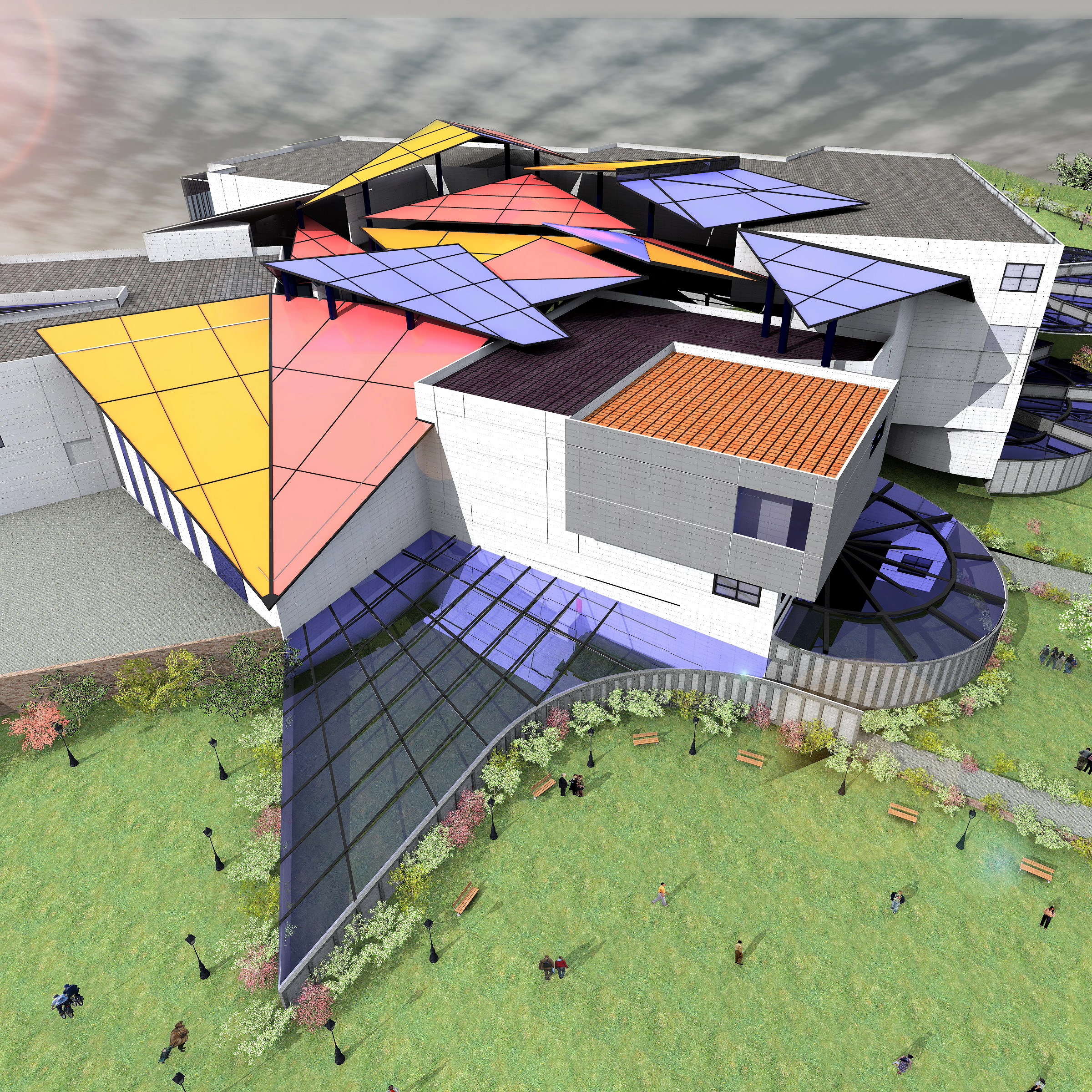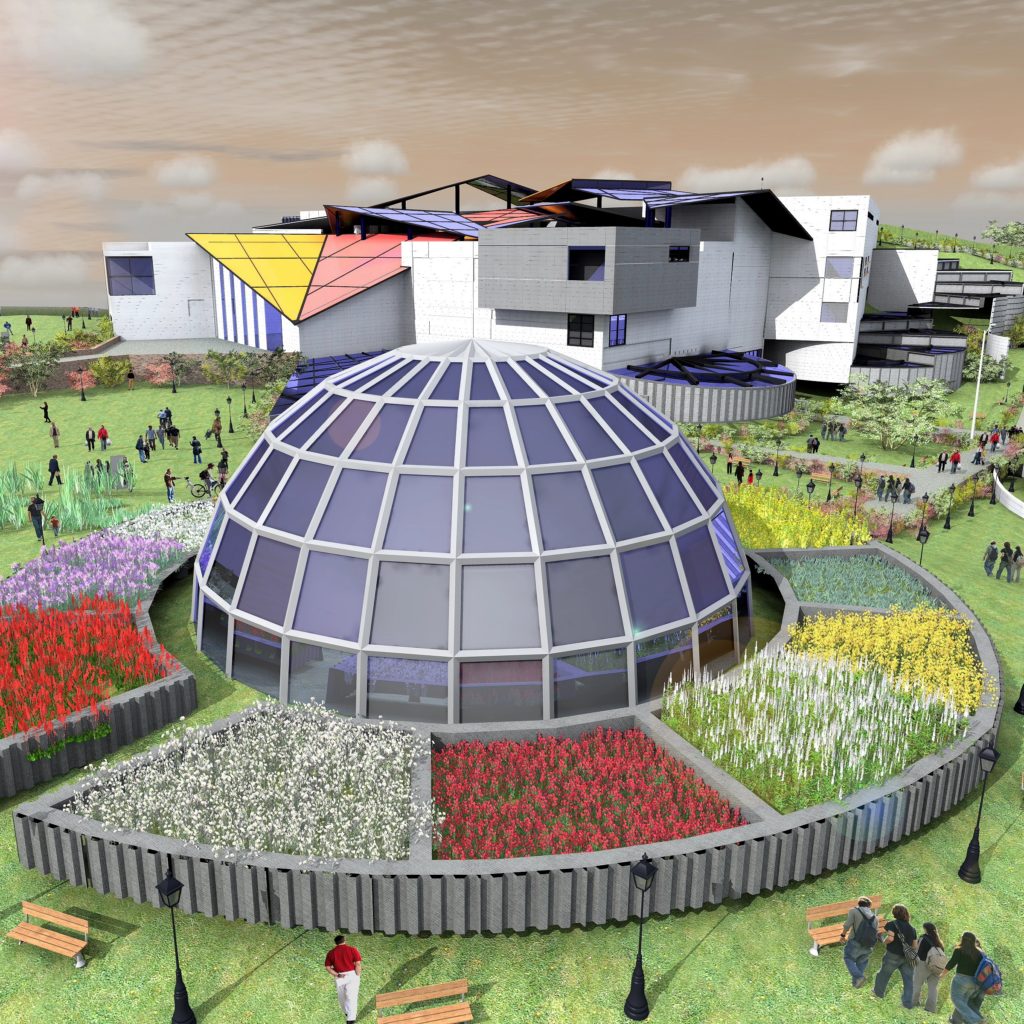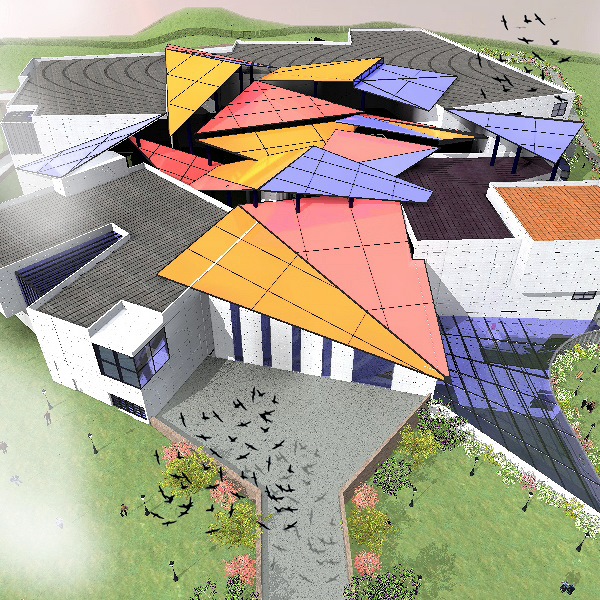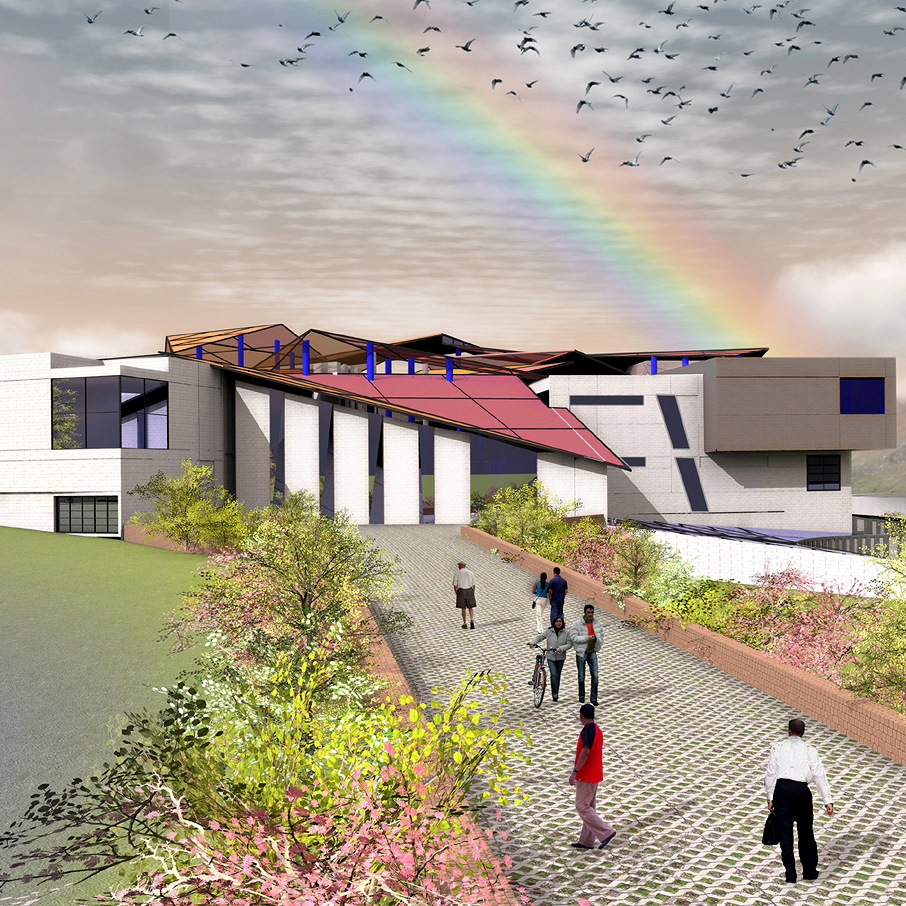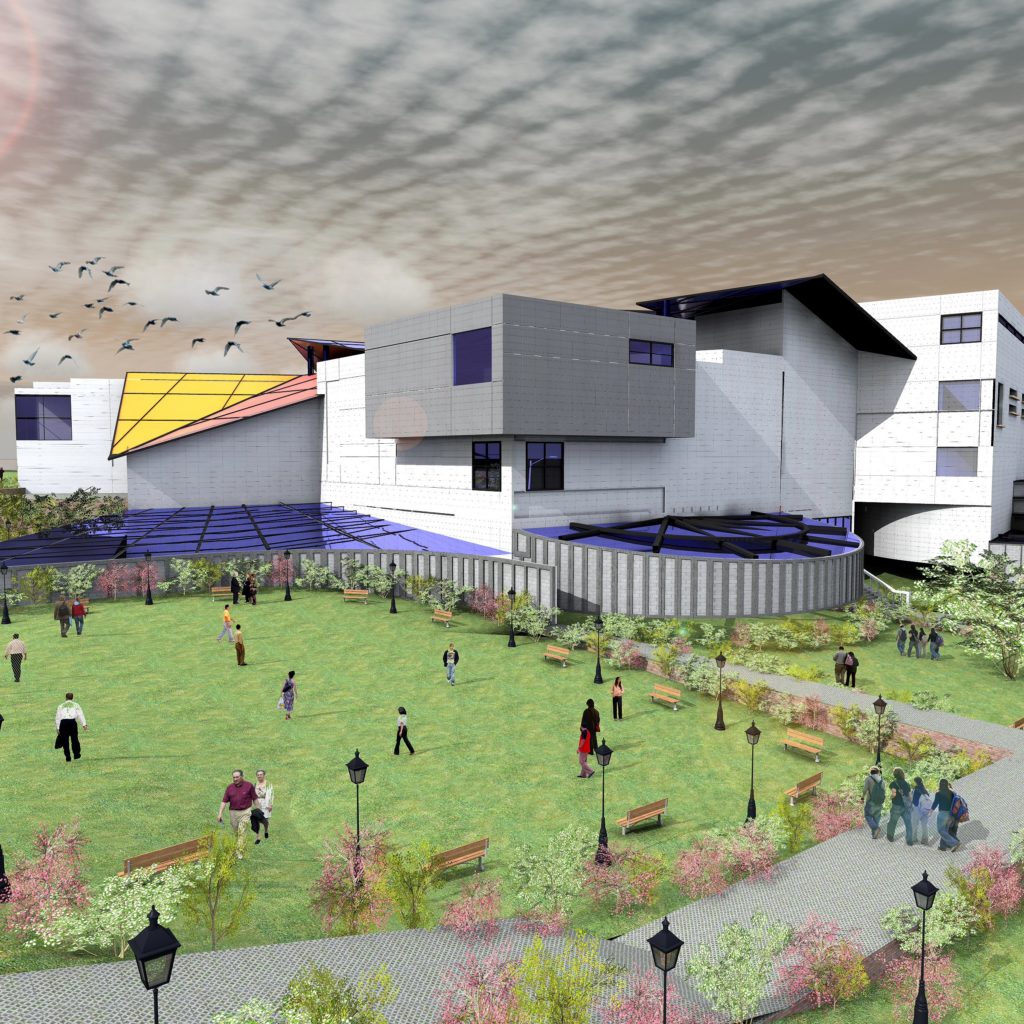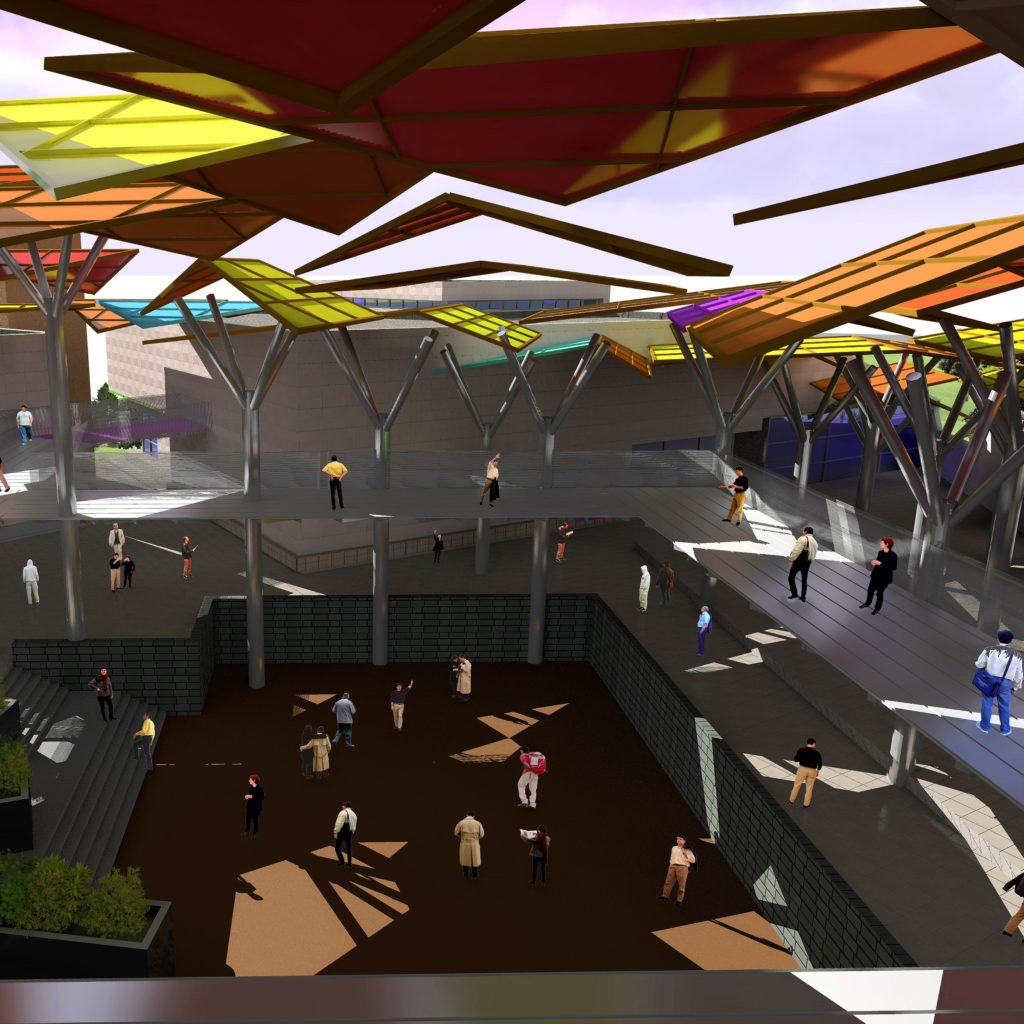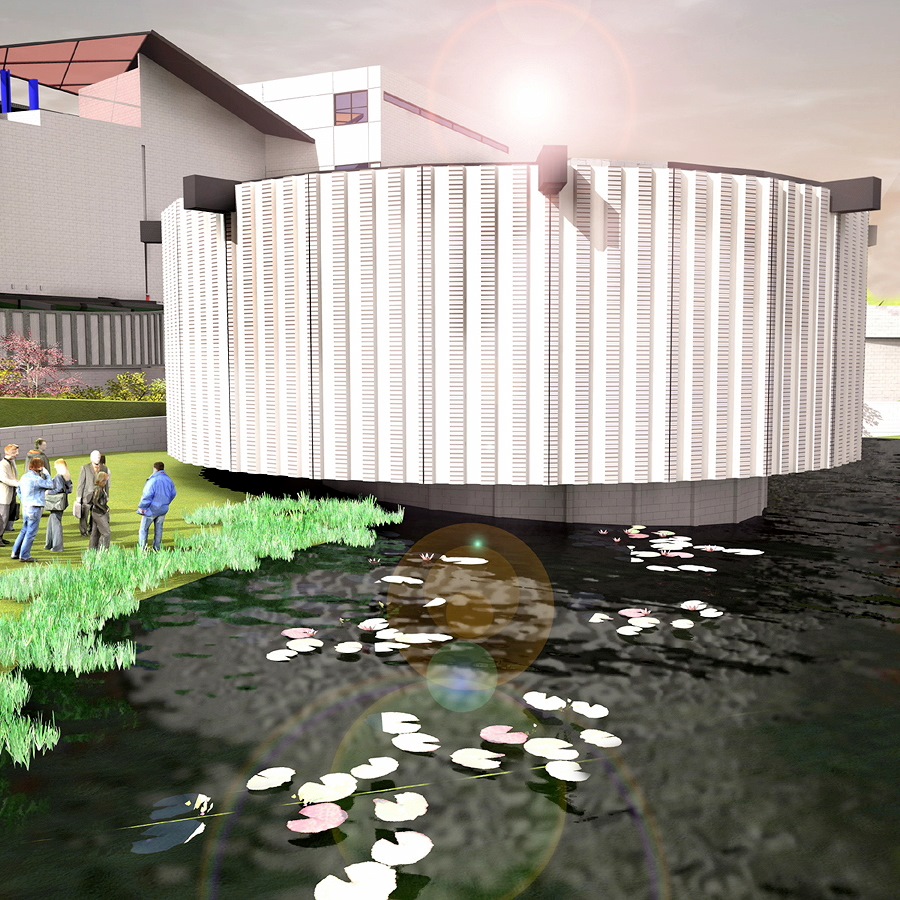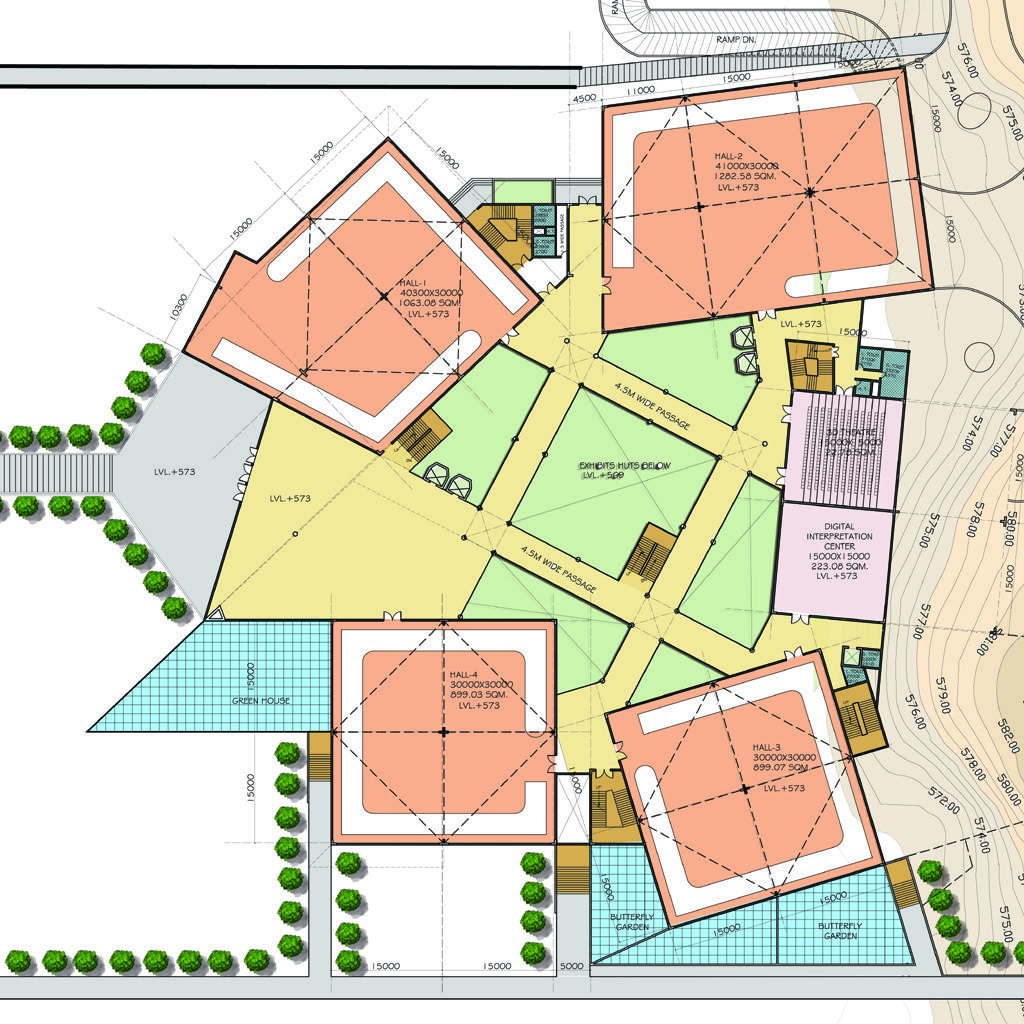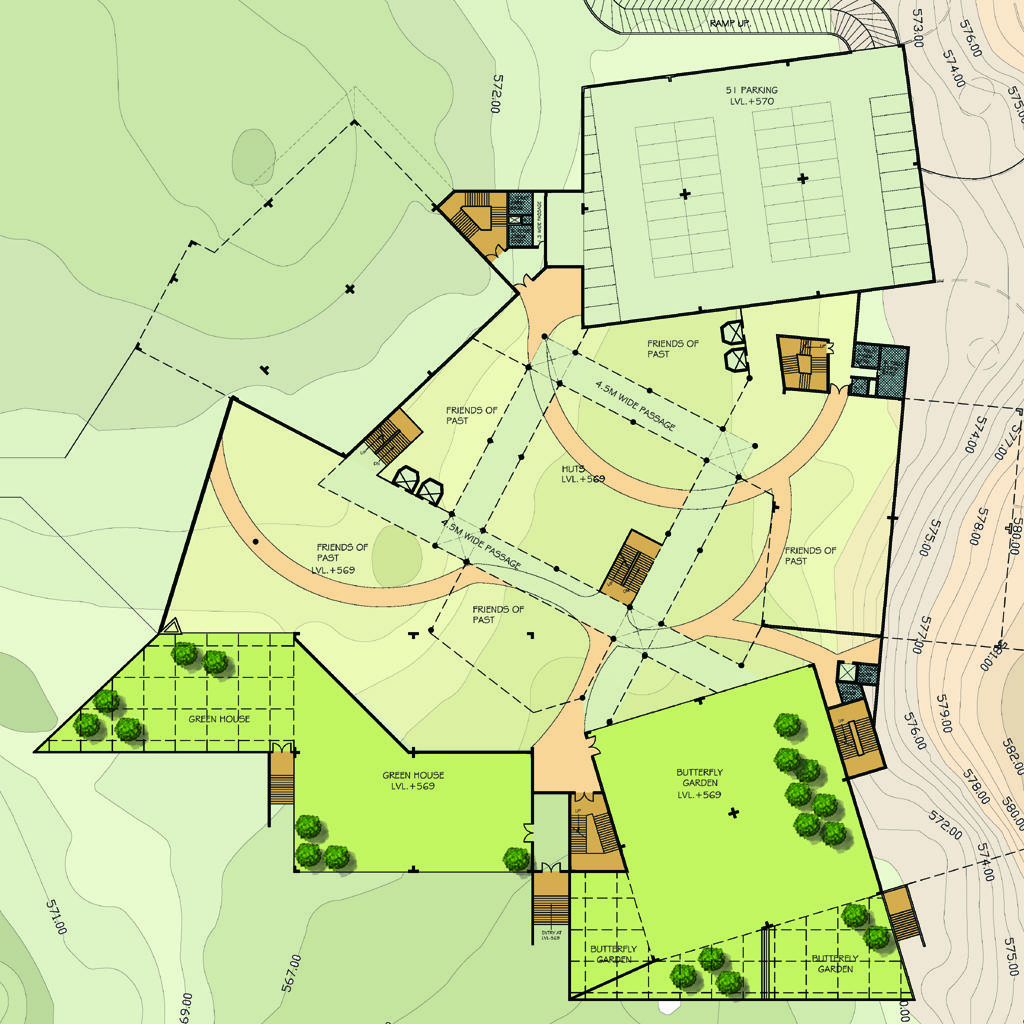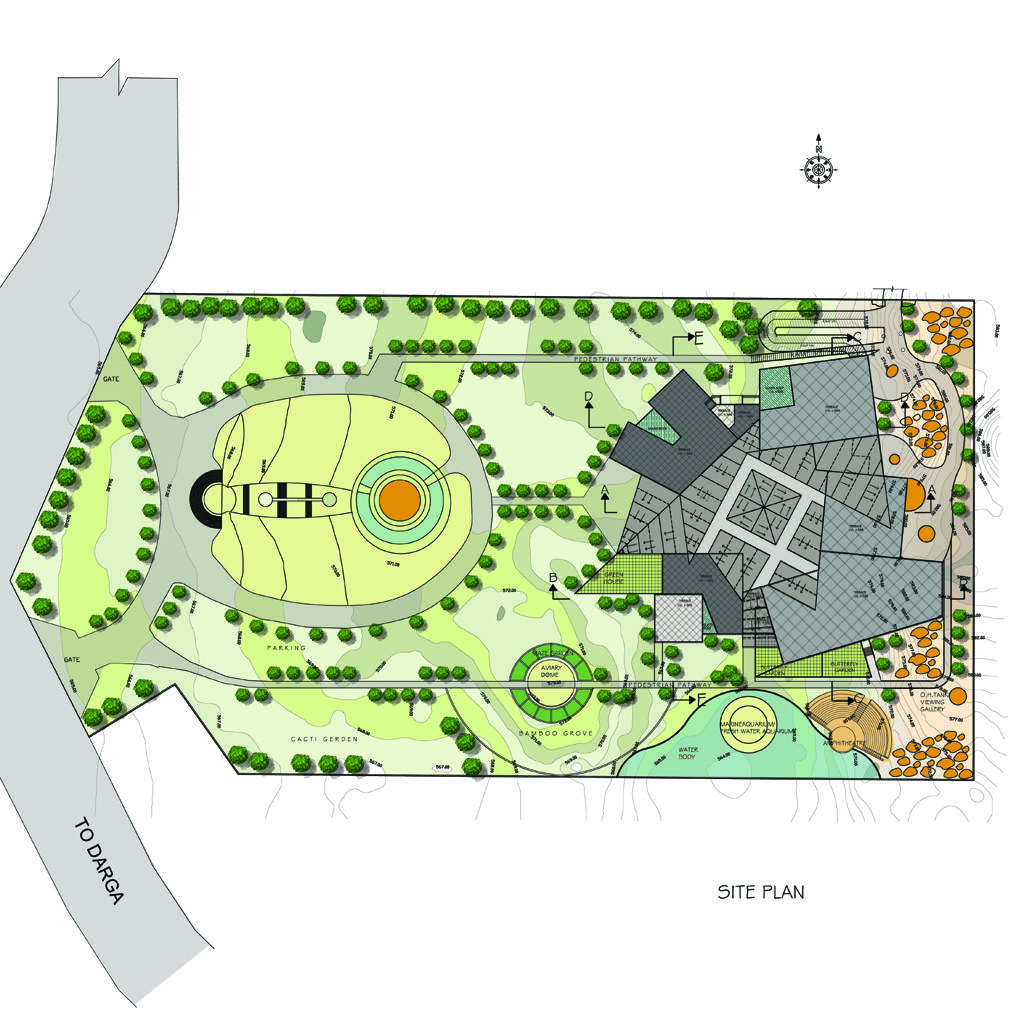DESIGN PROGRAM
At its core, Biodiversity Museum is a celebration of biodiversity, science and art of nature.
Proposal
The museum along with required infrastructural and visitors’ facilities would be built over an area of around 17000 Sq.m. After a detailed discussion with the technical expert committee, nine thematic galleries have been finalized.
An out- – door biodiversity park is to be set up as a part of the project. The 20 acre museum project will require an estimated cost of about 160 Cr INR.
Program Elements
- AUDITORIUM
- VISITORS HOLDING SPACE
- LIBRARY
- TEMPORARY EXHIBITION HALL
- WORKSHOP AND STORES
- 3D THEATRE
- DIGITAL INTERPRETATION CENTRE
- STUDENTS ACTIVITY CORNER
- GREEN HOUSE
- BAMBOO GROVE
- WATER BODY
- CACTUS PARK
- OPEN SPACE AMPHITHEATRE
- BUTTERFLY GARDEN
- LANDSCAPING
Area
TOTAL AREA ENVISAGED – 51,953 .00 SQM
LOCATION AND CONTEXT
The proposed site is situated near the cyber city of Hyderabad within the campus of the National Biodiversity Park , along the junction of old Mumbai highway and Hi-Tec city main road, of about 20 acres.
The site is rectangular in shape and located in a east west orientation approximately 321 m along the east west direction and 180 meter along the north south direction.
On the Northern side there is a proposed new road all the along the site connecting to the main road to the other institutional plots being developed on the northern and eastern peripheries.
The prestigious Cyber City of Hyderabad is located on the southern side of the plot over a hilly terrain overlooking the proposed site.
There are two artificial lakes/water bodies on the eastern and the western side of the plot. The lake at the eastern side is a kilometer away, and the lake on the western end is adjacent to the road junction.
The Shilpa gram craft village is situated on the eastern side of the plot about 500 metres away.
There are existing commercial developments along the Old Mumbai highway and the junction is a busy through-fare.
The front side of the park consists of passive and active landscape zones with a sculpture garden in the centre with a pylon depicting the genesis of bio-diversity.
Along the northern boundary wall there is a linear plantation of trees.
The rear portion of the site is barren and slopes down into a low-lying area, and then rises to a hilly formation at the rear.
The geological formation of the hillock on the top of which the proposed site is located runs in a linear direction along the north – south direction, along with the surrounding contoured area, consisting of sporadic rock formations characteristic of the Deccan plateau.
SITE ANALYSIS AND DESIGN MORPHOLOGY
The entire built up structure of the museum has been planned over the depressed area and rising to the hillock at the rear side of the site.
Effort has been made to develop a site responsive design.
The site has a contour difference of around 21m between the entrance area and the rear hillock area.
There are some localized mounds which have been effectively integrated with the design with certain.
The lowest point on the southern boundary has a low lying area which is proposed to be converted to a natural water collection reservoir with an overflow system to drain excess water into the external drainage system.
The steep gorges and the gentle slopes has been developed for other facilities like Science Parks gardens, Open air theatre , parking and other facilities.
Optimized cutting and filling of land profiles has been aimed to enable functional and cost effective external development work as far as possible.
There is a proposed road under construction along the northern boundary linking the main road to the rear end o the plot.
AXIS: This east west axis is the most predominant axis in the site connecting the peripheral roads, entrances, the sculpture garden, with the pylon and also the main museum building.
The planning and the spatial arrangement of the various blocks of the main building is based on the program requirement integrated with the natural profile of the site. The building block is fragmented as the natural site profile following the slopes and lines as far as possible. The rigidity of a linear axis has been broken with the apparent fragmentation of the museum building.
ACCESS: There are two major access to the proposed museum building. The frontal access is from the main road is a vehicular access and
after the parking zone it mitigates into a pedestrian walkway, around the pylon it gets connected to the main entrance level along a linear axis.
The pedestrian pathway continues in a linear manner alongside the main building rising to the rear hillock levels through a ramp and connects the rear access . This pathway forms a loop behind the building and slopes down on the other side connecting the observation deck , Open air theatre , water body, with the aquarium, aviary dome with maze garden , along other side of the main building till the main entrance.
There is another rear vehicular access to the museum building proposed from the side road at an elevated level connecting the auditorium and the service zones. This entrance also leads to a parking space at the level 570 through a ramp for about 50 cars.
PLANNING PARAMETERS
Gate Complex
The main gate complex is already been constructed consisting of two large entrances from the main road.
However this complex needs to be augmented with other ancillary facilities required to cater to a full fledged Bio diversity Museum – – including security central control room, washrooms , information centre, ATMs , cloak room , gift shops , first aid rooms.
Moreover proper parking needs to be augmented in this area to cater to the prescribed norms for car, bus and scooter parking for museum buildings.
A subsidiary gate complex is proposed on the northern side of the plot with similar facilities at 576 lvl.
At this level the outside road and the inside contours match enabling easy access.
This entrance provides access towards the rear side of the Museum complex leading to the auditorium, temporary exhibition hall, workshops and offices . Additional parking at 570 lvl for about 40 cars / two wheelers has been proposed accessed through a ramp.
Entrance Level
The main museum building has been proposed in two and three level plates depending on the local contour profile and functional requirement.
The entrance level has been planned at 573 level, approximately 1.5 to 2 .0 m above the pylon area. A large ceremonial ramp leads the
visitors from the pylon area to the main entrance foyer.
The basic planning parameter of the museum block consists of a large semi open space, having its shape deriving from the exhibition halls
surrounding it with a detached square circulation node in the centre, connected to the halls through suitable access sub nodes.
The size of the exhibition blocks are modular but fragmented in position and profile in order to match and synthesize with the contours of that area.
There are four exhibition halls in this level leading from the entrance foyer / reception / souvenir shops.
Apart from the halls this level also houses the 3d Hall and the Digital Interpretation unit.
The floor plate is provided with staircases , lifts and toilet blocks as per specified norms and requirement.
The large central quadrangle thus form by the halls flanked on all sides and the hillock at one end is covered at the top by a conglomeration of myriad roof forms partially solid and transparent supported over steel structures forming a play of light and shade and enable display of large suspended exhibits. This helps create a visual vista for the visitors from the various levels of the circulation node.
Lower Ground Level
The entrance level overlooks a lower ground below, proposed to be kept at the natural ground level of the depressed area. This area
would be utilized for displaying external exhibits like huts, dioramas depicting animals and events.
This level flows out towards the southern side of the plot through the green house and the butter fly garden towards the water body.
The butterfly garden steps up along the natural contours of the hill side at the rear side.
A parking lot has been proposed below Hall-2 for around 32 cars connected to the rear entrance through a ramp of suitable slope.
Main Museum Building
The basic layout follows the same profile as the floor below and comprises of 5 exhibition halls.
The position of the circulation node and service core remains the same.
Behind Hall 8 towards the rear end, facing the steep slopes a deck has been proposed to house a food court. This space is
connected to the peripheral pedestrian precinct through stairs to enable a visitor to exit without having to go through the
building again.
Behind Hall 6 the auditorium exit level with the stage and green room has been proposed. The exit is connected to the entry road through a cul de sac.
Level – 583m
This level consists of the service and activity areas of the proposed museum complex.
On the northern side over Hall 6 , the auditorium block and the students activity area including the Library , Workshop , Laboratory ,
Training Centre and the Computer centre has been proposed.
This lobby also connects the Temporary Exhibition hall and three Conference Halls.
Both the zones are connected through a large entrance lobby connected to the service road through a large cul de sac.
On the southern side over Hall 8 and the Food court, the Workshop, Stores and the Office block has been proposed. This zone is
connected to the loading / unloading lobby also proposed to service the Temporary Exhibition Hall for easy goods movement.
A proposed vertical link via goods lifts and service staircase links the workshop and stores with all the halls proposed in the various
levels.
The remaining areas over Hall- 5 and Hall-9 are to be kept as open terraces.
Roof Level
A roof over the atrium space has been proposed consisting of colored opaque sheets and transparent sheets at different
heights, slopes and forms. The sheets are proposed to be framed and supported by steel structures arising from the ground level and branching out at the upper level.
The roof shall be partially open from the side to enable free circulation of natural air and even rainwater shall be collected, channelized and drained at the lowest level.
The roof forms shall be designed so that it can be serviced for repair and maintenance.
Water Body and Aquarium
A large water body has been proposed at the southern side of the plot , where there is a natural depression and is the lowest point of
the site, by carrying out some additional removal of the natural ground and creating a water reservoir.
The main UG tank of the complex has been proposed below the deck of the Open air theatre which also becomes the natural catchment
area of rain and roof water of the entire phase -1 development. Hence the possibility of adopting easy water recharging / recycling is
possible with this arrangement.
The drainage system is proposed to be connected to this reservoir through drains collecting the roof water and partially the surface
water . Rain water harvesting shall be achieved in this manner. Excess water shall be drained into the peripheral drainage system through
overflow pipes to avoid flooding.
This water body is connected through pedestrian pathways with the main pedestrian precinct.
A natural and fresh water aquarium has been proposed over the water body connected through a small bridge with the main pedestrian
precinct.
The visitors shall move along this circular structure with the fresh water aquarium in the centre and the Marine aquarium along the
circumference.
Open Air Theatre
An Open Air Theatre has been proposed abutting the water body towards the rear end connected to the pedestrian precinct with
adequate capacity to enable recreational and educational shows and performances to be carried out. The OAT fits well with the contours
optimizing cutting and filling.
OHT and View Deck
The Overhead Tank has been proposed at the highest point in the site on the top of the hillock for better water flow. A view deck has been proposed over the tank level to provide the visitors a grand panoramic view of the entire Bio diversity park and the surrounding areas.
Aviary Dome
An Aviary Dome has been proposed over a natural mound along the pedestrian link. It is proposed to be a geodesic dome structure with
a circumambulatory path. Also integrated in this area is a maze garden around the Aviary Dome.
